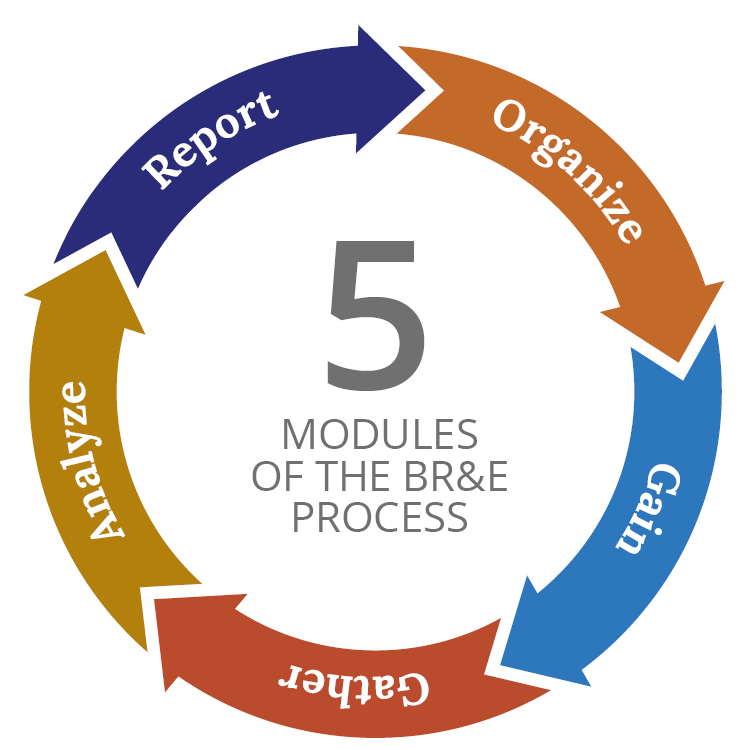Business Retention & Expansion
Vibrant communities often have a healthy economy with a diverse set of economic activity occurring related to job growth, business growth and attraction and a sustainable infrastructure. Business Retention & Expansion (BR&E) is an economic development strategy of utilizing a community taskforce proactively connecting with existing businesses to understand and respond to their needs. Purdue Extension offers BR&E as a targeted program for small companies (between 10 and 99 employees) as a method to help Indiana communities understand local business needs and respond, so that businesses grow, stay and become more committed to the community. Purdue Extension’s BR&E program gets further integrated into the community and more involved in comprehensive strategy development at the local and regional level to assist and assess company as well as community needs.

Strengthening Existing Small Businesses to Create Thriving Local Economies
Business Retention & Expansion (BR&E) is an economic development strategy of proactively connecting with existing businesses to understand and respond to local business needs. Special attention is given to small businesses that employ between 10 to 99 employees, otherwise known as Stage 2 firms.
Purdue Extension recognizes that thriving communities need to be economically successful. Communities with an active and sustained economic development strategy will plant seeds of success locally and regionally—and BR&E should be part of that equation. Over time, a quality and targeted BR&E program improves the business operating climate, ensures competition remains healthy, provides quality jobs and employment opportunities and assists in stabilizing the economy.
Purdue Extension’s BR&E program engages the broader community in developing comprehensive business retention and expansion planning, which in turn helps businesses stay, grow and become more committed to the community. Engagement with the community involves education, training and providing research for each community, thus building upon their ability to assess opportunities, understand local/regional resources and issues that impact their local and regional economies. All training, tools and resources are provided by Purdue Cooperative Extension’s Community Development Program.
Why is BR&E Important?
Existing businesses and the local workforce are key “barometers” of a community’s economic health (as a place to live, work and play). Research shows that small businesses are the major drivers of job growth. In Indiana, 85 percent of all existing businesses employ less than 100 people. They are the often-overlooked growth machine of the state—and the ones most likely to add new jobs to their portfolio. BR&E is intended to help focus the energies of community stakeholders on the economic assets that already exist in their cities, counties and regions, making them stronger and more resilient over time.
Who Should Be Involved?
Every community is different yet has a similar set of stakeholders who should serve on the BR&E taskforce. One individual will likely emerge as the local coordinator of BR&E efforts, and the taskforce will serve as their team guiding the efforts. Stakeholders to consider include:
- Economic development organizations
- Chamber of Commerce
- Retired business executives
- Government officials
- Utility representative
- Education entities
- Financial institution
- Business owner/operators
Taskforce members should be considered for the skills, knowledge and expertise they possess as well as their ability to process information in a timely manner to address any issues/topics that may arise.
Goals of the BR&E Program
- Assist Indiana communities in analyzing their local economies.
- Utilize this data/information as a basis for identifying, designing and implementing strategies that can help strengthen existing businesses and industries.
- Guide the community’s process of implementing the BR&E program by providing a BR&E coach/mentor to come alongside the community resources, moving the effort forward to completion and equipping the local BR&E coordinator to continue to lead the effort.
Five Modules of the BR&E Process

Module 1: Organize Task Force
- Form a BR&E Taskforce: The Task Force, which should include diverse stakeholders in parity with the community’s demographics, will be involved in gearing up for and implementing the BR&E program.
- Schedule and Hold Task Force Meetings: The Task Force discusses what industries or businesses should be targeted (such as Main Street businesses, Stage 1 and Stage 2 firms or industries/companies associated with a specific sector or cluster) and works on developing the questionnaire that the businesses and industries will be asked to complete. A list of businesses/industries to be surveyed is developed.
Module 2: Gain Support
- Assess Community Readiness: Each Task Force member will invite another community stakeholder to attend part of one of the Task Force meetings where they will jointly determine the readiness of the community for the BR&E program by using a “scorecard” method. If necessary, strategies will be employed to heighten community readiness before pursuing a BR&E program.
- Announce the Local BR&E Program: Information about the BR&E program will be shared through a variety of media outlets selected by the taskforce.
Module 3: Gather Information
- Distribute Questionnaires: Surveys will be sent out to each of the businesses/industries selected for the BR&E effort by the Task Force. Follow-up mailings will be sent to those who have not responded. Once all surveys are returned, individual Task Force members will be assigned to the selected businesses/industries, according to the companies’ preference.
- Conduct Site Visits: Selected businesses/industries that have agreed to be part of the BR&E program will be contacted to determine availability, and visits will be conducted by the BR&E Coordinator and the preferred member of the Task Force.
Module 4: Analyze Results
- Enter and Analyze Response Data: Both quantitative data (from the online surveys) and qualitative data (from the site visits) will be entered into the software program and analyzed.
- Identify and Address Red Flags: Information items collected from the surveys and during site visit interviews that raise “green flags” and “red flags” will be addressed by the Task Force. The Task Force will determine which specific strategies to use to address these issues.
Module 5: Report Findings
- Prepare Report on the BR&E Program: A brief report will be written by the Purdue coach, identifying areas of strength as well as specific areas of concern revealed during the study (with regard to supporting existing businesses/industries in the community).
- Communicate Results: Results will be shared with the general public in a well-publicized community forum, by the media or via any other appropriate outlets that the taskforce designates.
Purdue Extension Role
Purdue Extension is willing to help coach your taskforce through the BR&E steps on a case-by-case basis. Please reach out to our team to explore how we can help your community undertake this community-based BR&E effort.
To learn more about Business Retention and Expansion-Community Economics & Workforce Development, contact:
Michael Wilcox
Assistant Director and Program Leader
wilcox16@purdue.edu
Tanya Hall
Community Development Regional Educator
tjhall@purdue.edu
Daniel Walker
Community Development Regional Educator
walke422@purdue.edu

